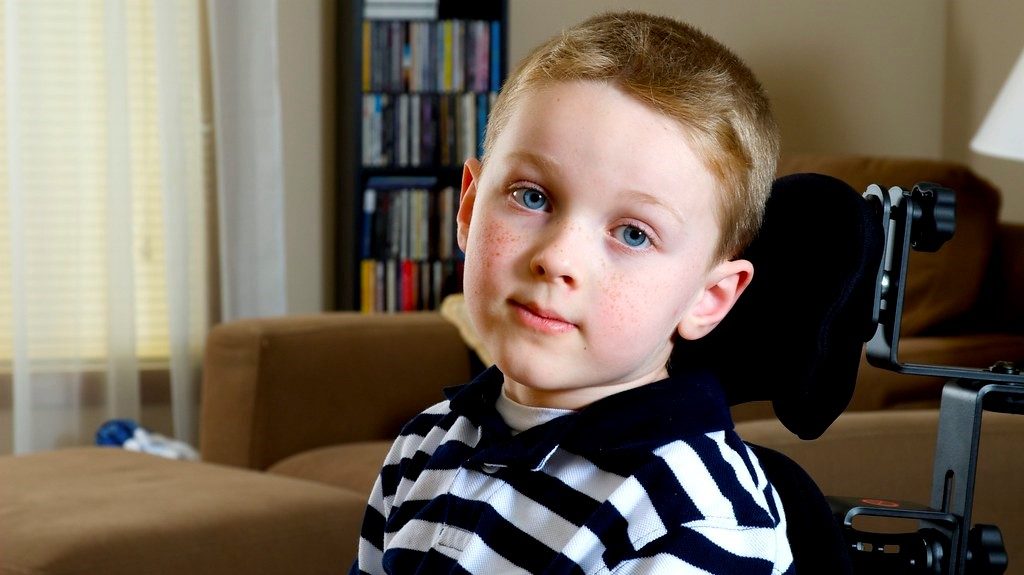The revolution that’s changing how we treat severe childhood disease
Dr Michelle Farrar is fighting a battle on many fronts to prevent and cure a degenerative childhood disease called spinal muscular atrophy (SMA).
Having led a key clinical trial at the Sydney Children’s Hospital, which resulted in the approval of what is still the only available treatment, she’s now monitoring the drug’s impact and looking at ways to provide earlier diagnosis.
She’s also collaborating on a visionary project to develop an alternative treatment using gene therapy. Success in that endeavour would be transformative for medicine around the world, she says, while also providing new hope for families affected by the disease.
SMA is a neuromuscular disorder, similar to motor neurone disease, and can be fatal, particularly for babies. It’s an inherited condition and is autosomal recessive, which means that both parents must have the same abnormal or deficient gene in order for it to occur.
This happens far more often than you might think – roughly one in every 10,000 babies has SMA, and most parents don’t know they’re carrying the gene until their child is born.

That’s what drove Farrar, a child neurologist, to search for answers.
“Through my training I remember encountering these children, and the desperation of parents being told that there was nothing that could be done, so it became a focus,” she says.
SMA has low public recognition, because until recently, the average life expectancy of an affected child was just nine months. The lack of visibility of these young patients out in the community has for many years made it difficult for advocacy groups to break through.
The good news is we’re starting to see a change, and the availability of Sprinraza – the new drug that Farrar helped put on the market – has been important.
But there are still some big improvements to be made.
Sprinraza is currently only available for selected patients, because it’s complicated and invasive, requiring spinal injections several times a year.
It’s also incredibly expensive. Until mid-2018, it was costing patients as much as $367,850 a year. The Australian Government is now carrying the cost, having added Sprinraza to the Pharmaceutical Benefits Scheme (PBS) – a move that has had a major impact on families across the country.
What excites Farrar is that SMA is the perfect candidate for exploring the potential of new gene therapy techniques, in part because it’s such a severe condition with so few options available.
In addition, the gene responsible for the disease is relatively small, which means it’s easier to work with than other genes.
The process Farrar is developing with Professor Ian Alexander at the Children’s Hospital at Westmead involves replacing the vital Survival Motor Neurone 1 (SMN1) gene that SMA patients are missing. They do this using a harmless virus.
“We are treating the root cause of the problem. They are missing a gene, which is causing their disease, and we are giving that gene back to them,” she says.
“The gene is delivered inside a virus that doesn’t cause a disease in its own right, and doesn’t get into your DNA and change you as a person. It sits in the cells outside your DNA and makes what you’re missing.”
The other major focus of Farrar’s clinical work is looking at ways to achieve earlier diagnoses of SMA to improve outcomes for all present and future treatments. The progressive loss of motor neurones is irreversible, so the longer it takes to confirm a diagnosis, the greater the damage.
Despite the challenges, Farrar is confident that her work will make a difference, and says there is the potential for Australia to lead the charge in improving both the treatment of SMA and the development of new diagnostic technologies.
“I liken it to where chemotherapy for childhood cancer was in the ‘60s, when there weren’t many options and survival rates very low. The first chemo agents came along, and they had some effect, and now, fast-forward 50 years, we have a 90% cure rate,” she says.
“I think that’s where we are – on the first step of an upward trajectory, and these new technologies are going to completely transform the way we treat severe diseases.”
By Nick Carne
Updated 6 years ago